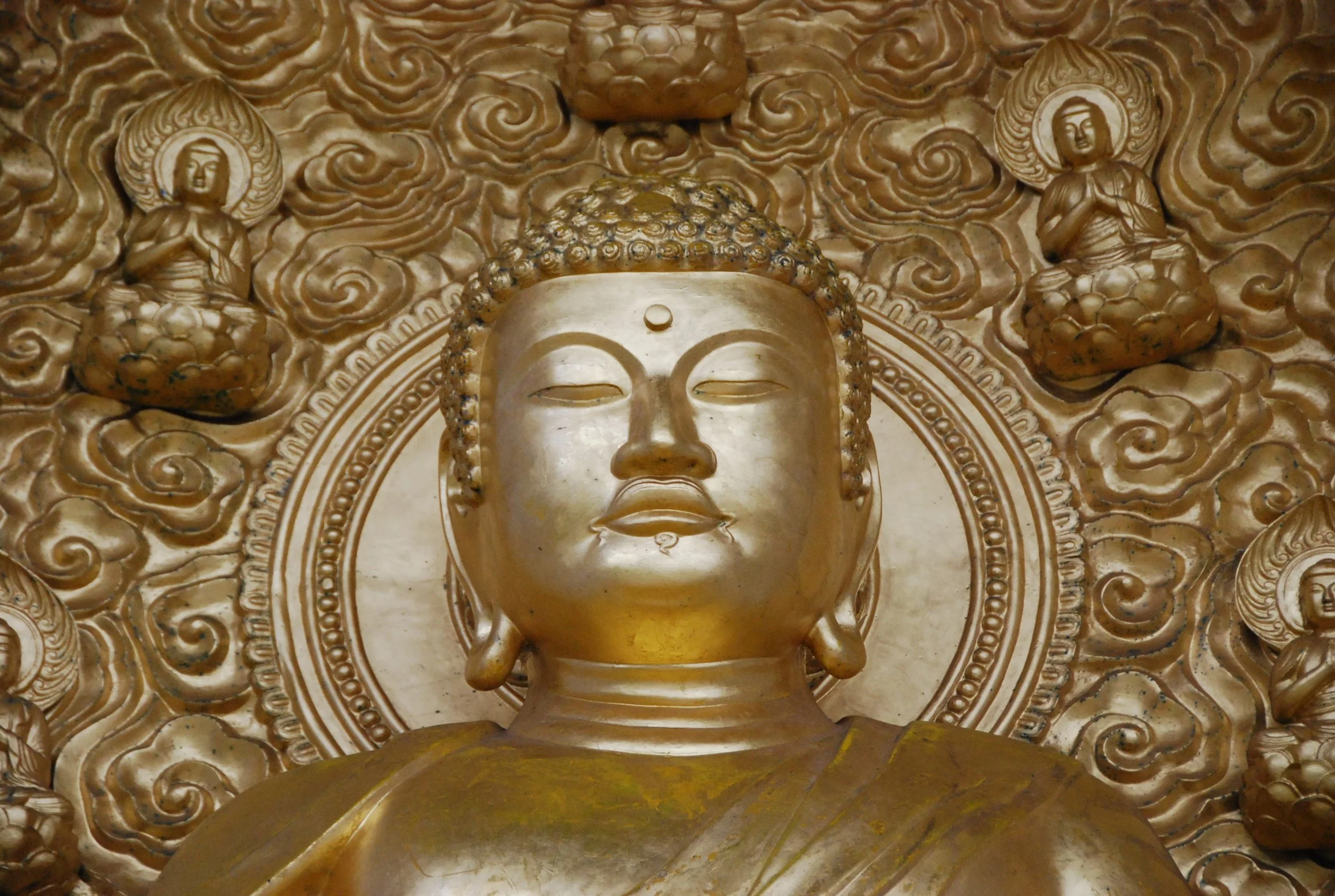The Life of Gautama Buddha
BUDDHA TAUGHT THE MESSAGE OF MERCY AND NON-VIOLENCE TOWARDS ALL LIVING BEINGS. ACCORDING TO VEDIC TRADITION HE WAS THE NINTH AND MOST RECENT AVATAR OF LORD VISHNU.
BUDDHA’S BIRTH AND EARLY LIFE
Prince Siddhartha Gautama was born in the house of King Shuddhodhana and Queen Mayadevi in Lumbini in 563 B.C and was raised in the Shakya capital of Kapilavastu.
On the night of his conception, Queen Mayadevi dreamt a white elephant with six white tusks entered her right side. Ten months later, she left for her father’s kingdom to give birth; however, Siddhartha was born on the way, under a sal tree in Lumbini.
During his birth celebrations, the Seer Asita predicted Siddhartha would either become a great saint or a great king. On the fifth day of his birth celebrations, King Shuddhodana held a naming ceremony and invited eight Brahmin astrologers to predict Siddhartha’s future. All the astrologers concluded he would either become a king or a saint, except for Kondanna, the youngest of the Brahmins and later to be named the first arahant – The first person to achieve enlightenment. Kondanna predicted Siddhartha would become a great Saint.
In fear of losing his heir, the king tried to confine him within the palace. Siddhartha was exposed to material things and kept away from all objects and teachings which could encourage him to pursue the spiritual path. His isolation included the realities of human suffering.
At the age of sixteen, Siddhartha married Yasodhara and they conceived a son named Rahula. He spent 29 years as a prince in Kapilavastu.
SIDDHARTHA GAUTAMA’S RENUNCIATION
On his 29th birthday, Prince Siddhartha decided to walk out of the palace for the first time. He encountered a sick person, a poor person and a corpse being carried to the funeral. He had never been taught about sickness, poverty and death; and was unable to keep these realities out his mind. This experience sparked the flame of his spiritual longing and his journey towards enlightenment thus began.
Siddhartha left for Rajagaha where he began his ascetic life as a mendicant. Bimbisara, the King of Rajagaha, recognised Siddhartha and offered him the throne. Siddhartha declined the offer and decided to leave Rajagaha, promising to visit once more upon achieving enlightenment.
Siddhartha then practiced the yogic teachings of hermit teachers Alara Kalama and Udaka Ramaputta, and was asked to be the successor of both his teachers. Siddhartha felt this was not his path, and his quest towards liberation had only just begun.
NIRVANA UNDER THE BODHI TREE
Siddhartha realized his path was that of Dhyana – meditation and not the one of extreme asceticism. He sat under the famous Bodhi tree at Bodh Gaya, and vowed not to rise until he had found the ultimate truth. After 40 days, at the age of 35 he finally manifested Nirvana and became Gautama Buddha, the first Buddha.
Nirvana is the attainment of liberation from the cycle of birth and death. It is the the obliteration of the flames of desire, hatred and ignorance. A state in which the individual boundaries and limitations are destroyed and one becomes whole with the universe. In this state, it is said one possesses the ten great characteristics of Buddhahood.
BUDDHA’S TEACHINGS AND THE WHEEL OF DHARMA
Buddha travelled to Sarnath near Varanasi, where he initiated the wheel of Dharma by giving his first sermon to the five companions with whom he had pursued enlightenment. Hence the first sangha – company of Buddhist monks was founded.
The five monks became arahants, and within a short time span the sangha grew to over a thousand monks. Buddha travelled to the Gangetic plain, Bihar; to share his teachings with nobles, servants, criminals and cannibals alike.
Buddha decided to visit King Bimbisara to keep his promise, and spent three seasons at a monastery is Rajagaha. Soon, King Suddhodana heard of his son’s enlightenment and decided to send a delegation with a message asking his son to come back. The delegation failed in delivering the message, and instead joined the sangha to become arahants. King Suddhodana sent more delegations, which ended up joining the Sangha too. Ten delegations were sent; The last delegation, led by Kaludayi who was a Gautama’s childhood friend finally delivered the message, but became a arahant aswell.
BUDDHA’S RETURN TO KAPILAVASTU
Buddha agreed to return to Kapilavastu. Upon his arrival, when King Suddhodana saw the sangha begging for alms, he approached his son and said:
“Ours is the Mahamassata lineage of warriors, not a single warrior has ever begged for alms.”
“This may not be the custom of your royal lineage but it is the custom of my Buddha Lineage. Several thousand Buddhas have begged for alms.” – Replied Buddha.
Suddhodana invited the Sangha into the palace for a meal, which was followed by a Dharma talk. King Suddhodana was so inspired by the event, he became a Sotapanna –one who enters the noble eightfold path. Many members of the Royal family joined the Sangha. Rahula, his son joined the sangha at the age of seven and became one of Buddha’s ten chief disciples.
MAHAPARINIRVANA
At the age of 80 Buddha declared he would soon reach Parinirvana or the ultimate deathless state; the final abandoning of the body by will.
It is said, Buddha’s last words were - “All composite things are perishable. Strive for your own liberation with diligence.”


